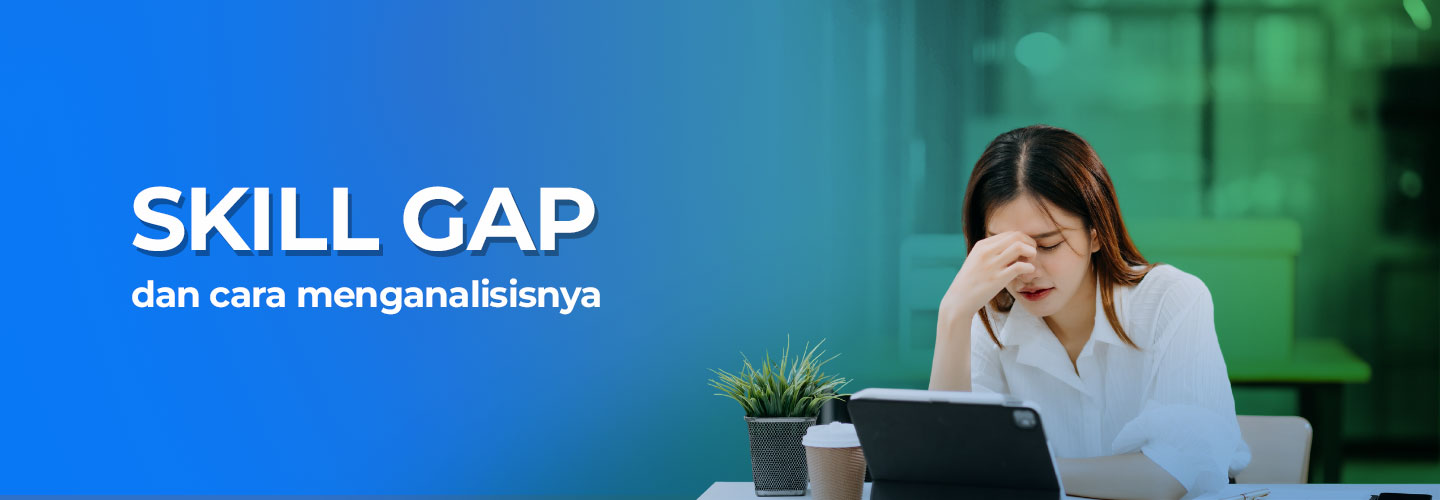Understanding Skill Gap and How to Analyze the Situation

Employee abilities and achievements will usually be evaluated by human resource (HR) practitioners. This stage is carried out to identify the abilities of employees who are relevant and can contribute to helping business development.
Labor productivity is one of the main capital which plays a crucial role in increasing business effectiveness. For this reason, this is usually evaluated periodically.
With assessments by HR practitioners, of course not all employees have the same skills. There will always be gaps (skill gaps) that occur in the world of work, especially in the new digital economy. Therefore, every company needs to build an effective workforce to fill this gap for the company's progress.
What is a Skills Gap?
Usually, companies have a list of skills that can change according to external market needs and internal organizational changes. Skill gap is the difference in abilities between employees and their skills are most suitable for the job.
It is not easy to find suitable skills for every position in the company. This is what causes a skills gap. There are many factors that cause skill gaps, including the following.
- Lack of experience
- Inadequate training
- Bad recruitment
- Employee turnover
- Failures in the wider education system
- Changes in roles or responsibilities
- Various Skill Gaps
Skills gaps can take many forms. In general, skill gaps can be divided into the following three types.
1. Knowledge Gaps
Job-related knowledge is necessary to be able to perform tasks well. People with sufficient knowledge can understand the suitability of the job for the organization and collaboration between staff members.
2. Skills Gap
Skills refer to the ability to apply appropriate knowledge in specific situations. Employees need skills for work that can be mental (e.g. coding), physical (e.g. fitness), or communication soft skills.
3. Performance Gaps
Lack of motivation or engagement leading to poor performance. Performance gaps occur when employees do not perform well even though they have the abilities and all the tools available.
How to Analyze the Skill Gap in a Company
The company's needs will continue to develop according to the times. Therefore, an appropriate response is needed to compete with the market. So that it can be handled appropriately, here's how to identify employee skill gaps.
1. Make a plan
Making a skill gap analysis plan involves determining the subject. Each participant can be evaluated based on the skills required for the position. Planning can help determine skill indicators that are important for the company.
You can make the team the subject of analysis to determine collective capabilities that are useful for handling the next project. That way, you can find people who can contribute appropriately to the organization's goals.
2. Identify essential skills
Examine each job role in the organization. Understand the requirements, responsibilities and skills necessary to achieve business success. Involve frontline employee management to ensure a comprehensive understanding of each role.
3. Evaluate employee skills
You can continue the skills gap analysis after identifying the skills that play a role in realizing business goals. Increase efficiency by paying attention to skills based on evaluating employee skill levels. Conduct interviews, KPI measurements, surveys, team and individual performance reviews, or feedback from employees.
4. Perform data analysis
After conducting the evaluation, prioritize skills that are considered lacking among employees. The essence of prioritization is determining the optimal approach to address gaps to meet the requirements of a particular role within the company.
5. Take action
Knowing the skill gap is useful for determining the best way to continue development plans in the company. Take advantage of existing data to provide job or skills training that can support employee competency.
Carry out appropriate evaluations by utilizing the Assessment Program based on the characteristics of each employee. That way, you can get a positive contribution to the success of the company.